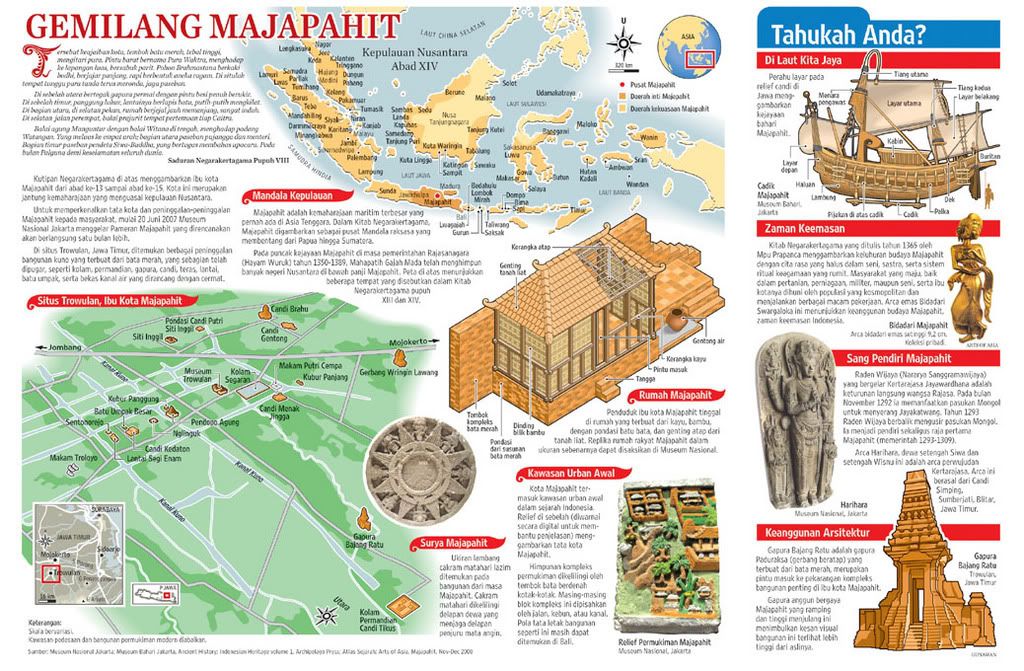




Majapahit empire
Historical kingdom, Indonesia Majapahit empire, the last Indianized kingdom in Indonesia; based in eastern Java, it existed between the 13th and 16th centuries. The founder of the empire was Vijaya, a prince of Singhasāri, who escaped when Jayakatwang, the ruler of Kaḍiri, seized the palace. In 1292 Mongol troops came to Java to avenge an insult to the emperor of China, Kublai Khan, by Kertanagara, the king of Singhasāri, who had been replaced by Jayakatwang. Vijaya collaborated with Mongol troops in defeating Jayakatwang; Vijaya then turned against the Mongols and expelled them from Java.
Under his rule the new kingdom, Majapahit, successfully controlled Bali, Madura, Malayu, and Tanjungpura. The power of Majapahit reached its height in the mid-14th century under the leadership of King Hayam Wuruk and his prime minister, Gajah Mada. Some scholars have argued that the territories of Majapahit covered present-day Indonesia and part of Malaysia, but others maintain that its territory was confined to eastern Java and Bali. Nonetheless, Majapahit became a significant power in the region, maintaining regular relations with China, Champa, Cambodia, Annam, and Siam (Thailand). The golden era of Majapahit was short-lived; the empire began to decline after the death of Gajah Mada in 1364, and it was further weakened after the death of Hayam Wuruk in 1389. The spread of Islām and the rise of the Islāmic states along the northern coast of Java eventually brought the Majapahit era to an end in the late 15th or early 16th century.
No comments:
Post a Comment